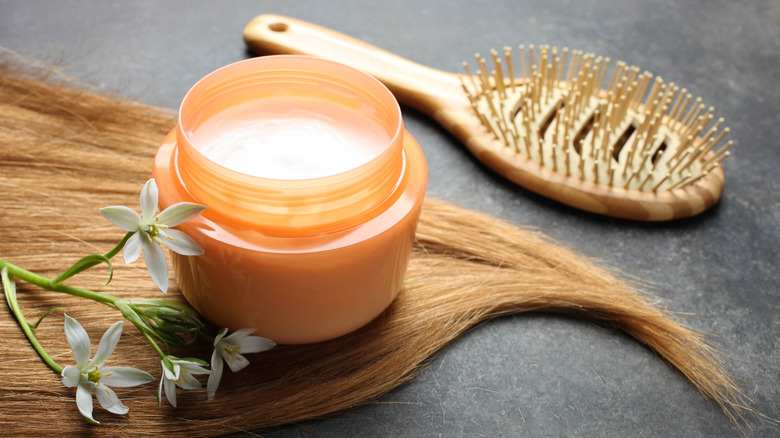How To Know If Your Hair Is High Or Low Porosity
If you haven't already noticed, all hair types work differently. Some hair will get frizzy when it's humid, while other hair will get oily for seemingly no reason at all. A lot of this comes down to hair porosity. "If there is a lot of moisture in the air, hair with high porosity will suck it in, resulting in frizzy or un-cooperative locks," Toni & Guy's International Artistic Director, Daniele de Angelis, explained to Glamour. "High humidity will prompt absorption which in turn causes swelling of the hair. On the other hand, hair with low porosity, which retains a lot of moisture, may become greasy quicker — resulting in shine (and not the good kind)."
"If we think of the hair like straw, healthy hair has nice smooth cuticles running down the straw, but damaged, porous hair has holes in it," Senior Master Stylist at Charles Worthington Salons, Johanne Herald, further elaborates. "The type of hair that's porous needs a repair product that acts as a filler to fill gaps, and the smooth type needs a light product to hydrate enough without weighing down," she continued. But how do you know if your hair is high or low porosity?
You can test hair porosity at home
According to cosmetic chemist Ni'Kita Wilson, high porosity hair absorbs products more easily than low porosity hair. "Low porosity hair has tightly closed cuticles that repel water (adding proteins on top of this makes wetting out the hair so much more difficult)," Wilson told Allure. "Hair with high porosity means that the cuticles are open allowing moisture to flow in and out of the strand (sometimes too fast.)"
Ultimately, the best way to determine whether your hair is high or low porosity is simply to test it out using products you have at home. Glamour believes that if your hair reacts well to lightweight hair products, you're likely to have high hair porosity. If you find heavier products work best, your hair is probably low porosity.

